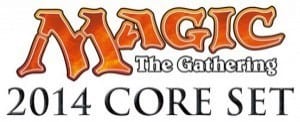
You’ve heard of the difficulties surrounding an annual release of a digital trading card game, developers faced with implementing unique storylines, game modes, and other features that need to keep players captivated year after year in order to justify a purchase. But what if you can’t implement additional features? What if there is no narrative and no hook to draw players in beyond the gameplay itself? Well, then you have the Magic the Gathering core game, celebrating its 20th anniversary on August 5, 2013. It relies on the gameplay we’ve mastered and loved, yet we still return year after year to purchase booster packs, attend Friday Night Magic, and enter tournaments. Once an activity relegated to the “geek and nerd” clique, Magic the Gathering has broken those barriers and, as those bearing the moniker of geek or nerd begin to rewrite the definition, has become a hobby of people who bear no title.

To battle the tyrant of tediousness, the development team at Wizards of the Coast is forced to implement changes to each set upon release. One way to ensure that fans return to purchase booster packs is the tournament rules that are handed down which can sometimes take a card from powerful — and on the auction block, it may be expensive — to completely illegal and nearly worthless. Also with the release of the M14 set, players are seeing the return of ‘Sliver’ cards, a creature type that’s been absent for some time. Playing off of each other, Sliver decks have the ability to be quite powerful but also run the risk of being misplayed or too weak if you’re inexperienced or are lacking a particular card to tie the entire army together.

There have been many rule changes implemented this year as well, which helps keep the game feeling “fresh” and allows players to get a taste of different mechanics year after year. Obviously, the rules are meticulously combed over when any changes are made and, much to Wizards of the Coast’s credit, fan feedback is considered.

Finally, and perhaps most impressive is that there is one thing that hasn’t changed for the Magic the Gathering 2014 core set: the artwork. Whether you’re a fan of the game or not, the artwork that graces each card is magnificent. For fans of the fantasy genre, seeing a towering giant peering down on a mountain landscape is breathtaking. An undead zombie, claws stretching from his fingers, is quite unnerving, but beautiful nonetheless. The talent behind the artwork is unmeasurable. It’s been a wonderful constant, these last 20 years; while veterans slap instant spells on the table and enchantments are used to win games, for two decades Magic the Gathering has remained beautiful.


















